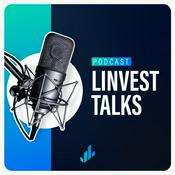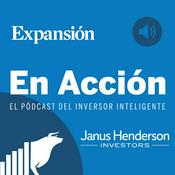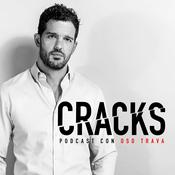430 episodios

The Precarity Line | Ben Hunt and Adam Butler on the Broken Math of the American Dream
19/12/2025 | 1 h 19 min
In this special episode, Adam Butler and Ben Hunt join Matt Zeigler to unpack one of the most charged debates in markets and economics today: whether our official statistics still reflect lived reality. Building on Mike Green’s work and Adam Butler’s essay The Bureau of Missing Children, the conversation moves beyond the technical definition of poverty to a deeper idea of economic precarity, the growing gap between what we measure and what people actually experience. Together, they explore debt, housing, childcare, labor mobility, AI, and the erosion of meaning in economic language, while wrestling with what policy, community, and human-centered solutions might look like in a world that increasingly feels unstable.Main topics coveredWhy the debate should focus on precarity rather than povertyThe disconnect between inflation statistics and lived experienceHow debt, housing, childcare, and education drive economic insecurityThe idea of a participation budget for modern family formationWhy labor mobility has broken down since the financial crisisHow asset prices and credit intensify risk for householdsThe role of grandparents and off-balance-sheet support in the economyDarwin’s wedge, positional goods, and rising costs of everyday lifeThe impact of AI, technocracy, and anti-human incentivesCentralized versus decentralized solutions to today’s economic challengesWhat it means to carry the fire and preserve human-centered valuesTimestamps00:00 Introduction and the emotional roots of the precarity debate02:00 Poverty versus precarity and what we are really measuring06:30 Technocrats, narratives, and the limits of economic statistics09:00 Personal experiences with precarity and debt15:00 The Bureau of Missing Children and family formation economics21:00 Modeling household income and participation budgets25:50 Rising costs of childcare, housing, and everyday life33:00 Darwin’s wedge and positional competition36:45 Debt, housing, and labor immobility40:00 Grandparents, unpaid care, and off-balance-sheet subsidies46:30 How today differs from 40 or 50 years ago49:40 Labor mobility as a lost engine of opportunity55:00 Policy paths, mission-driven economics, and decentralization01:11:00 Visionary leadership versus bottom-up solutions01:15:50 Carrying the fire and preserving meaning01:17:30 Where to follow Adam Butler and Ben Hunt

The Alpha No Human Can Find | David Wright on Machine Learning's Hidden Edge
17/12/2025 | 1 h 1 min
In this episode of Excess Returns, we sit down with David Wright, Head of Quantitative Investing at Pictet Asset Management, for a deep and practical conversation about how artificial intelligence and machine learning are actually being used in real-world investment strategies. Rather than focusing on hype or black-box promises, David walks through how systematic investors combine human judgment, economic intuition, and machine learning models to forecast stock returns, construct portfolios, and manage risk. The discussion covers what AI can and cannot do in investing today, how machine learning differs from traditional factor models and large language models like ChatGPT, and why interpretability and robustness still matter. This episode is a must-watch for investors interested in quantitative investing, AI-driven ETFs, and the future of systematic portfolio construction.Main topics covered:What artificial intelligence and machine learning really mean in an investing contextHow machine learning models are trained to forecast relative stock returnsThe role of features, signals, and decision trees in quantitative investingKey differences between machine learning models and large language models like ChatGPTWhy interpretability and stability matter more than hype in AI investingHow human judgment and machine learning complement each other in portfolio managementData selection, feature engineering, and the trade-offs between traditional and alternative dataOverfitting, data mining concerns, and how professional investors build guardrailsTime horizons, rebalancing frequency, and transaction cost considerationsHow AI-driven strategies are implemented in diversified portfolios and ETFsThe future of AI in investing and what it means for investorsTimestamps:00:00 Introduction and overview of AI and machine learning in investing03:00 Defining artificial intelligence vs machine learning in finance05:00 How machine learning models are trained using financial data07:00 Machine learning vs ChatGPT and large language models for stock selection09:45 Decision trees and how machine learning makes forecasts12:00 Choosing data inputs: traditional data vs alternative data14:40 The role of economic intuition and explainability in quant models18:00 Time horizons and why machine learning works better at shorter horizons22:00 Can machine learning improve traditional factor investing24:00 Data mining, overfitting, and model robustness26:00 What humans do better than AI and where machines excel30:00 Feature importance, conditioning effects, and model structure32:00 Model retraining, stability, and long-term persistence36:00 The future of automation and human oversight in investing40:00 Why ChatGPT-style models struggle with portfolio construction45:00 Portfolio construction, diversification, and ETF implementation51:00 Rebalancing, transaction costs, and practical execution56:00 Surprising insights from machine learning models59:00 Closing lessons on investing and avoiding overtrading

The 100 Year Thinkers | Chris Mayer and Robert Hagstrom on the Dangers of Abstraction
15/12/2025 | 1 h 13 min
In this episode of our new show The 100 Year Thinkers, Robert Hagstrom, Chris Mayer, Bogumil Baranowki and Matt Zeigler explain how investors get trapped by labels, abstractions, and simplistic models, and why breaking free with better mental models, language, and long-term thinking is a real edge in markets.Subscribe on Spotifyhttps://open.spotify.com/show/5IsVVM27KWP6SUW6KN2ifeSubscribe on Apple Podcastshttps://podcasts.apple.com/us/podcast/the-100-year-thinkers-long-term-compounding-in-a-short-term-world/id1845466003Subscribe on YouTubehttps://youtube.com/@excessreturns

Magnet Above. Trap Door Below | Inside the Options Flows Driving Markets with Brent Kochuba
13/12/2025 | 1 h 10 min
Brent Kochuba takes a look behind the scenes at the options flows driving the market heading into the December options expiration and the end of 2025. Subscribe on Spotifyhttps://open.spotify.com/show/4KR2YVJqk2lnVETMKDavJfSubscribe on Apple Podcastshttps://podcasts.apple.com/us/podcast/the-opex-effect/id1711880009Subscribe on YouTubehttps://www.youtube.com/channel/UCPYvx_y92dvI1PSdiho0ALw

He Was Overweight Tech for 15 Years. He Just Downgraded the Mag Seven | Ed Yardeni Explains Why
11/12/2025 | 49 min
Ed Yardeni returns to Excess Returns to break down the evolving market landscape, why he moved the Magnificent 7 to underweight, and how AI, productivity, interest rates, global markets, and sector leadership will shape the next stage of the Roaring 2020s. Ed explains why the economy has remained so resilient, what could finally trigger a true market broadening, and how investors should think about everything from tech competition to inflation, private credit risks, and Fed policy heading into 2026.Main topics covered• Why Ed reduced the Magnificent 7 and tech from overweight to market weight• How extreme sector concentration affects portfolio construction• The escalating competition inside AI and large-cap tech• The AI CapEx boom and how it changes earnings, margins, and valuation• Valuation considerations for tech leaders at this stage of the cycle• Whether the Mag 7 should be compared to past tech bubbles• How AI adoption may spread to the broader economy and boost productivity• Economic impact of AI on jobs, wages, and long-term inflation• Why the US economy avoided recession despite persistent warnings• Rolling recessions vs traditional recessions and how they shape markets• Private credit risks and whether they pose a systemic threat• Prospects for small caps, mid caps, financials, industrials, and healthcare• Why 2026 may finally bring true market broadening• The outlook for international investing and emerging markets• Ed’s S&P 500 roadmap to 7,700 next year and 10,000 by 2029• Fed policy, rate cuts, inflation, bond vigilantes, and political pressure• Key risks investors should monitor heading into 2026Timestamps00:00 Mag 7 concentration and the case for rebalancing03:00 How Ed builds probability-based market scenarios04:30 Why the Roaring 2020s thesis still holds06:00 The no-show recession and economic resilience07:00 Why he moved the Mag 7 and tech to market weight09:30 How every company is becoming a technology company12:20 Knowing when a successful thesis has run its course13:30 The dominance of the US market and global diversification15:00 Why market weight, not overweight, for tech and the Mag 716:00 Tech competition, AI leapfrogging, and margin pressure18:30 The CapEx boom and valuation questions21:00 Comparing today’s tech leaders to the 2000 era23:00 How AI could lift productivity across the entire economy25:00 Putting AI in historical context27:00 How new technologies solve constraints like energy and compute29:00 AI’s long-term impact on productivity and growth30:00 Labor market disruption and job transition dynamics31:20 Will AI be deflationary over time?32:30 Technology, China, automation, and global deflation forces33:00 Ed’s forecast for the S&P 500 through 202935:00 Why recession indicators failed this cycle37:00 How liquidity facilities prevent credit crunches39:00 Private credit risks and transparency challenges40:45 The potential for market broadening in 202642:20 Takeaways from the latest Fed meeting44:00 Should the Fed be cutting rates?45:00 Fed independence under political pressure47:00 Why bond vigilantes may return in 202648:00 International investing opportunities and ETFs49:30 Closing thoughts and key risks ahead
Más podcasts de Economía y empresa
Podcasts a la moda de Economía y empresa
Acerca de Excess Returns
Escucha Excess Returns, imagin | El podcast de final de mes y muchos más podcasts de todo el mundo con la aplicación de radio.es

Descarga la app gratuita: radio.es
- Añadir radios y podcasts a favoritos
- Transmisión por Wi-Fi y Bluetooth
- Carplay & Android Auto compatible
- Muchas otras funciones de la app
Descarga la app gratuita: radio.es
- Añadir radios y podcasts a favoritos
- Transmisión por Wi-Fi y Bluetooth
- Carplay & Android Auto compatible
- Muchas otras funciones de la app


Excess Returns
Descarga la app,
Escucha.







































